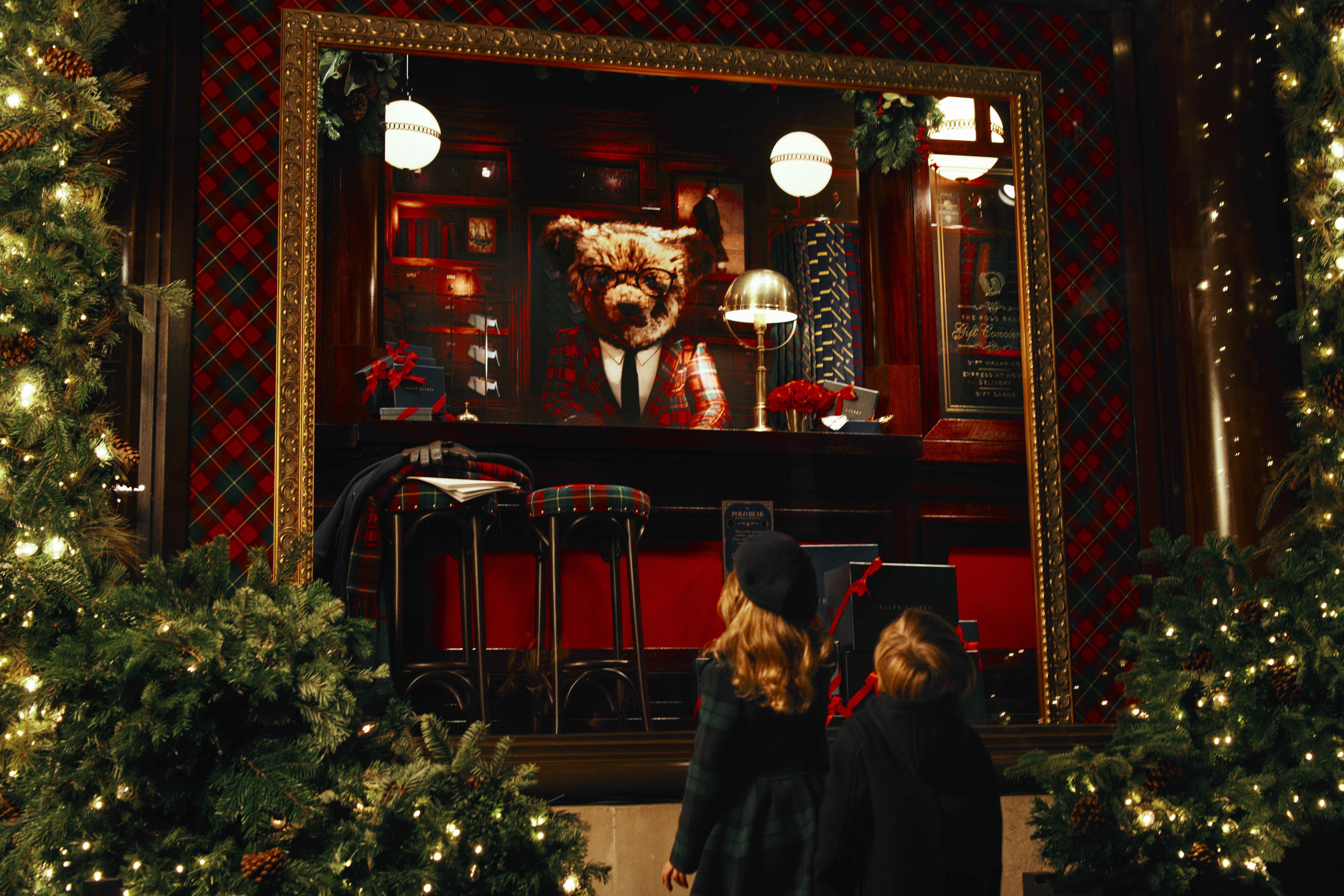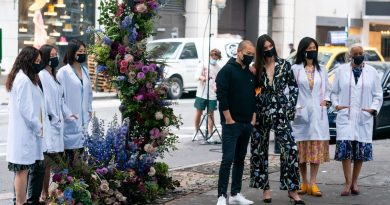Luxury Briefing: Ralph Lauren goes big on holiday windows as luxury retailers pull back
This week, a look at the changing strategies around luxury holiday window displays, with a focus on how Ralph Lauren used AI this year to create an interactive display. Plus, we spoke with Watches of Switzerland CEO Brian Duffy about his observations on the growing American luxury watch market.
The holidays are an essential time of year for retail brands. Black Friday, or what some now call Black November, is still one of the biggest shopping periods for brands in the U.S. and internationally, even as this year’s Black Friday is shaping up to be somewhat dimmer than in years past.
For brick-and-mortar retailers, it’s also a chance to show off a classic holiday shopping attraction: window displays. Despite the growth of Cyber Monday and e-commerce, half of Americans are expected to shop in-person this holiday season. In retail hubs like Manhattan, store window displays have long been a signal of the official beginning of the holiday season. But this year, some stores are taking different approaches to setting up their windows.
Dior, for example, unveiled its holiday window displays at its Paris store this week. Elements of the display, including miniature versions of French landmarks like the Eiffel Tower and the Arc de Triomphe, were repurposed from earlier displays. Over the last two years, Dior has created installations for big department stores like Harrods in London and Saks Fifth Avenue in New York City. The brand pulled pieces from those installations to create the holiday look of its Paris store.
It’s a canny reuse of existing resources at a time when brands are conscious about how much they’re spending. Some department stores, like Saks Fifth Avenue, are pulling back on their holiday displays. After announcing new window displays and a holiday light show in October, Saks reversed course in mid-November, announcing in a statement that the light show — which it has hosted for nearly 20 years — would no longer happen due to “changes in its approach to the holiday windows.” The window displays are still happening as planned, however.
But at least one brand is going bigger with this year’s holiday window displays. On Friday, Ralph Lauren unveiled its new window displays at flagship stores in New York, London, Tokyo and Chicago. The displays use AI technology to make the displays interactive.
Developed over six months alongside the tech company Cinimod, the window display features a 3D rendering of the iconic Ralph Lauren polo bear that can interact with passersby in real time. The bear can wave, take selfies, dance and blow kisses. Each city’s version of the bear will vary. In New York, the bear wears a tuxedo and appears in a Manhattan penthouse apartment overlooking Central Park. Meanwhile, in the London window displays, the bear works as a tailor in a wood-paneled haberdashery, sipping coffee and cutting garments while interacting with pedestrians.
David Lauren, son of Ralph Lauren and the brand’s chief branding and innovation officer, described the displays as “cinematic” and fitting into Ralph Lauren’s long history of embracing emerging tech.
“Immersing our customers in the world of Ralph Lauren doesn’t just begin when a customer crosses the threshold into a store, but it’s at every touchpoint of the store experience,” Lauren said. ”Next time you walk past one of our stores, take a look at the windows and it will feel like you entered a movie set. Ralph Lauren has been a pioneer in transforming the retail experience for nearly 60 years, and our iconic windows have been a canvas for creative innovation — we’ve done everything from holograms to theatrical demonstrations to incredibly imaginative creative displays.”
The displays use a combination of 3D renderings along with real-world props and set dressings.
Ralph Lauren leaning into a bigger display than ever comes at a time when, compared to other luxury brands, it’s doing well. Luxury has been in a notable downturn, with even mighty conglomerates like Kering and LVMH feeling the pressure on their bottom lines as consumers curb spending.
But Ralph Lauren is growing. Its most recent earnings, reported at the beginning of November, showed revenue growth of 6% in the quarter ending in September to $1.7 billion, beating the $1.68 billion estimate from analysts.
As more brands feel the crunch from the luxury slowdown, the holiday shopping season becomes an even more important time to make up for losses earlier in the year. David Lauren called this period “a uniquely crowded time,” but added, “Creating moments and experiences that break through and are touching and memorable is a challenge we look forward to every year.”
The American opportunity for luxury watches
Brian Duffy, CEO of Watches of Switzerland, said he’s been amazed by the depth of knowledge and appetite for luxury watches from the American market.
About a year ago, intending to collaborate, the Watches of Switzerland team started conversations with Hodinkee, the American watch-focused media outlet and online store. Hodinkee is a trusted name among American watch connoisseurs, and Duffy thought it could help Watches of Switzerland reach the market. That collaboration eventually morphed into a full acquisition of Hodinkee by Watches of Switzerland in October.
Speaking to Glossy this week, Duffy said the deal is just the beginning of Watches of Switzerland’s strategy to get in front of more American watch enthusiasts.
“The big sea change in the watch market over the last few years has been the success of the U.S. market,” Duffy told Glossy. “It’s one of the top markets in the world now. Probably the biggest surprise is the huge entrance of a younger cohort into the market, and it’s undoubtedly true that younger people are buying watches in America.”
Hodinkee has the dual distinction of being both American and popular among young, hip watch heads — two categories of consumers Watches of Switzerland would love to court.
Duffy said one of the most notable things about the American market, in addition to the relative youth of many of the customers, is the obsessive knowledge that many American watch consumers have. It’s a trend that Glossy has noted before, particularly in the menswear and sneaker categories: Consumers often obsess over specific model numbers, details and materials. Hodinkee, with its nerdy focus on the minutiae of mechanical watchmaking, played into that mindset in much the same way that American sneakerhead blogs obsessively catalog the many colorways of Nike Dunks.
“These communities in America are very obsessive, very knowledgeable,” Duffy said. “That doesn’t exist everywhere. In America, there’s an insatiable appetite for information. These consumers are super well-informed. They know what year the lugs were changed on a watch. They know details down to the millimeter. The level of general knowledge in the American watch market has been influenced by these kinds of watch communities.”
The latest from Glossy
How Puma turned the Las Vegas Grand Prix into a major brand moment
Elina Vilk on David’s Bridal’s new business opportunity: Wedding planning is ‘ripe for disruption’
Burberry’s new strategy: Can a return to heritage revive the business?


